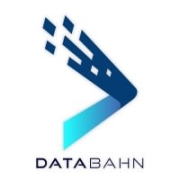Observability Pipeline Software streamlines the collection, transformation, and routing of telemetry data to enhance monitoring capabilities and performance analysis for complex IT environments.
This software enables organizations to efficiently manage vast amounts of telemetry data, automating the collection, transformation, and routing processes. It enhances monitoring systems by providing a scalable infrastructure that can handle the complexities of modern distributed architectures, ensuring timely insights into performance issues and operational health. Tailored to meet the demands of IT teams, it offers flexibility and control over data flows.
What are the critical features of this solution?In finance, Observability Pipeline Software helps maintain accurate financial systems by ensuring seamless data integration and prompt error detection. In healthcare, it supports compliance and patient data management through flawless data handling and integration with critical monitoring tools.
Organizations benefit from adopting Observability Pipeline Software as it simplifies data management processes, offering clear insights and improving decision-making capabilities within complex IT infrastructures.
| Product | Market Share (%) |
|---|---|
| Cribl | 44.6% |
| DataBahn | 15.0% |
| BindPlane OP | 14.2% |
| Other | 26.200000000000003% |





















By implementing Observability Pipeline Software, you can achieve enhanced data visibility across your infrastructure. It integrates various data sources, providing centralized insights for better monitoring and faster troubleshooting. The streamlined data flow ensures you identify and address issues promptly, enhancing system reliability and performance.
What are the key features to look for in Observability Pipeline Software?When selecting Observability Pipeline Software, you should prioritize data integration capabilities, scalability, and real-time analytics. Automation features are crucial for efficiency, while customizable dashboards offer tailored insights. Also, verify that the software supports diverse data formats to accommodate your existing tools and services.
How does scalability impact the efficiency of Observability Pipeline Software?Scalability is vital as it determines the software's ability to handle growing data loads without sacrificing performance. A scalable Observability Pipeline ensures that as your business expands, the system can continue to provide accurate and timely insights without requiring substantial modifications or additional resources. This flexibility helps maintain operational efficiency.
What role does automation play in Observability Pipeline Software?Automation within Observability Pipeline Software significantly enhances operational efficiency by reducing manual intervention in data processing and analysis. Automated workflows streamline data ingestion, transformation, and alerting, allowing you to focus on strategic decision-making rather than routine maintenance tasks. This leads to quicker response times and more effective resource allocation.
How do security features integrate with Observability Pipeline Software?Security is a critical component integrated into Observability Pipeline Software to protect data integrity and privacy. It often includes encryption protocols, access controls, and monitoring tools to detect and respond to unauthorized activities. These features ensure that sensitive data remains secure throughout the pipeline, safeguarding your organization against potential threats.